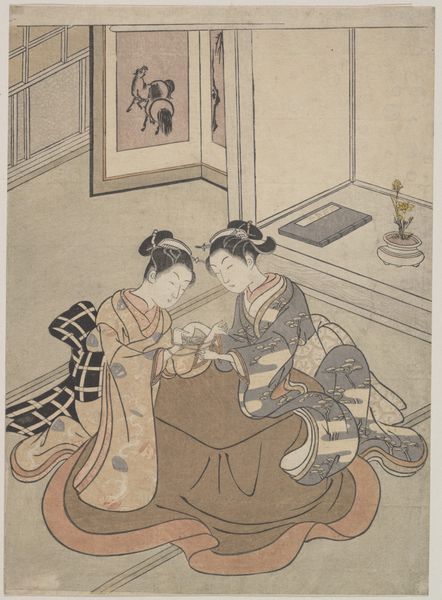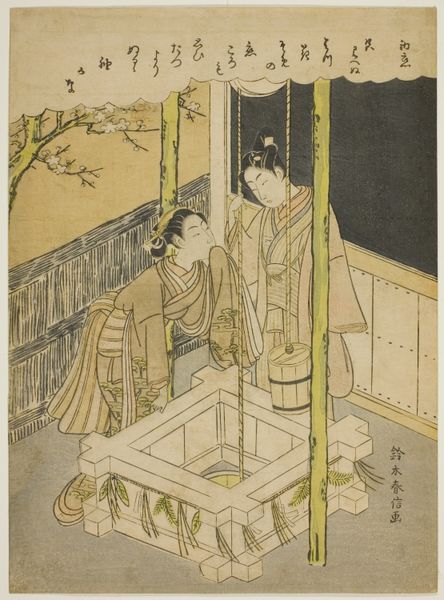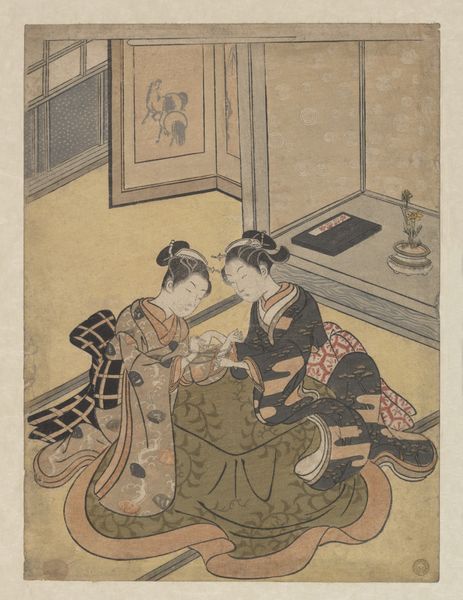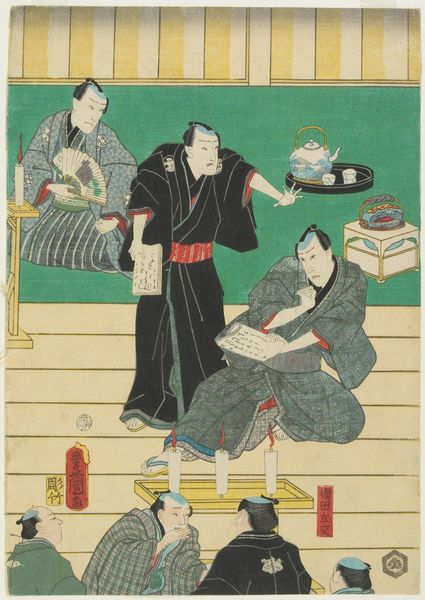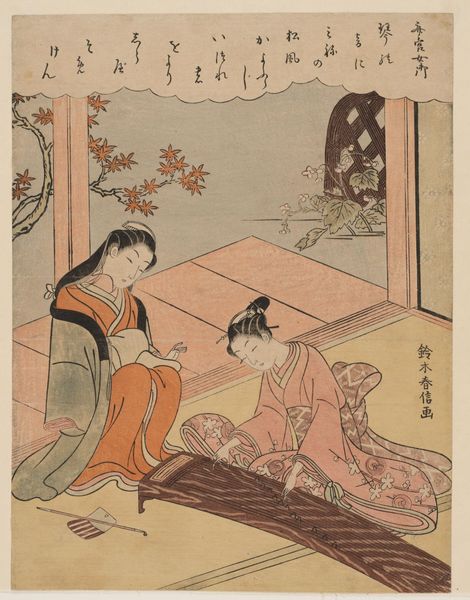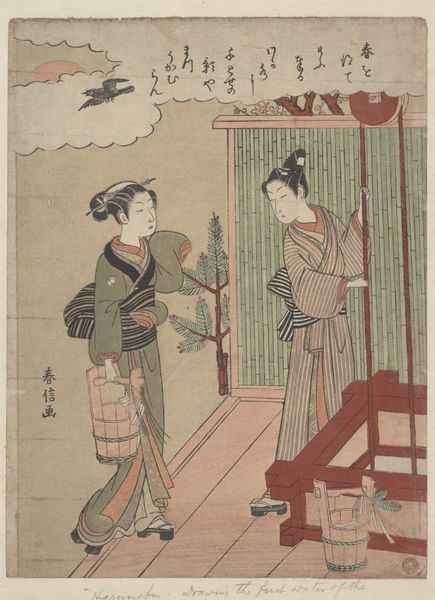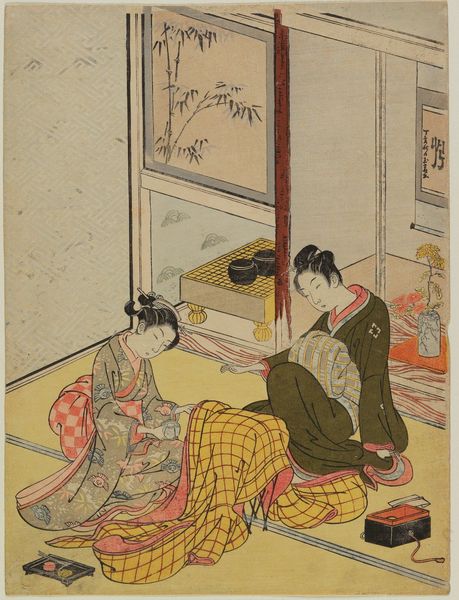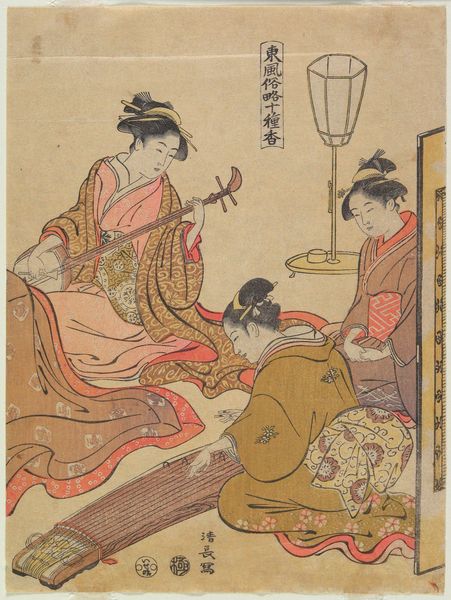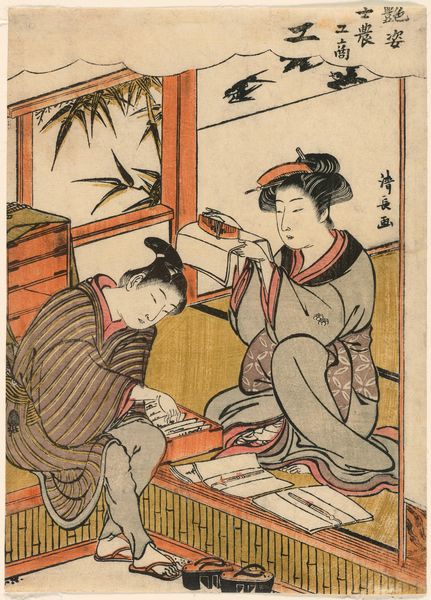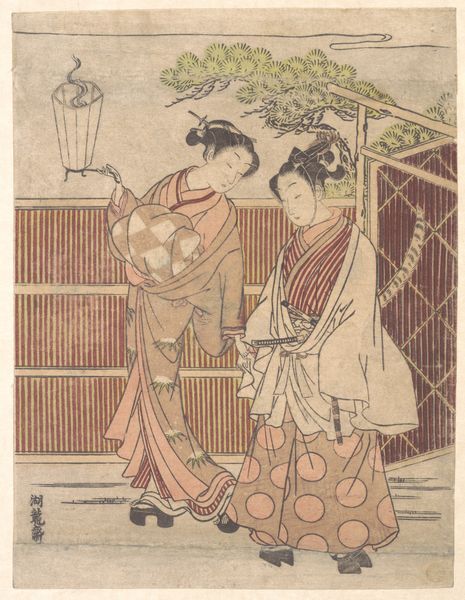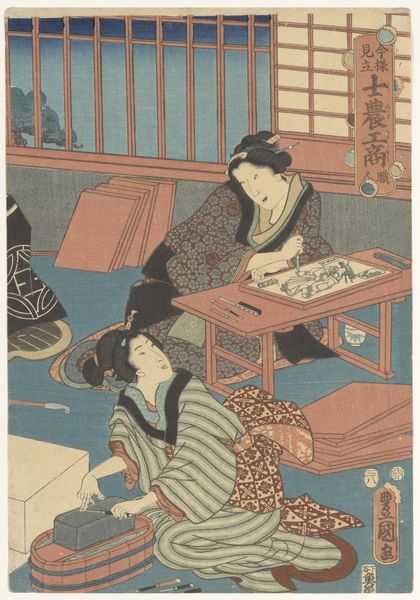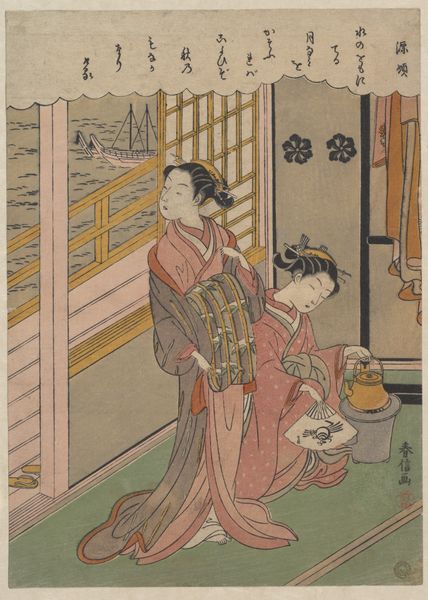
A Young Woman and Man Playing Shōgi (Japanese Chess); Chūnagon Kanesuke, from a series alluding to the Thirty-Six Poetic Immortals (Sanjūrokkasen) 1767 - 1769
0:00
0:00
print, woodblock-print
#
portrait
# print
#
asian-art
#
ukiyo-e
#
figuration
#
woodblock-print
#
genre-painting
Dimensions: 11 1/8 x 8 1/8 in. (28.3 x 20.6 cm)
Copyright: Public Domain
This color woodblock print was made in Japan around 1768 by Suzuki Harunobu, one of the most influential artists of the Ukiyo-e style. Here, two figures are depicted playing Shōgi or Japanese chess. Harunobu was working at a time when Japanese society was highly regulated, especially in what could be represented in art. Ukiyo-e prints were popular among the merchant class and often depicted scenes of everyday life, but there was strict censorship, and artists like Harunobu had to be clever in their allusions. This print alludes to the Thirty-Six Poetic Immortals, a canon of celebrated poets, by showing a contemporary scene featuring a young couple playing chess. What makes this print so interesting is how it subtly comments on social and cultural norms through visual codes, playing with the relationship between tradition and contemporary life. To better understand prints such as this, we can consult historical documents, social histories, and other Ukiyo-e prints from the period. The meaning of art emerges from its specific cultural and institutional context.
Comments
No comments
Be the first to comment and join the conversation on the ultimate creative platform.
